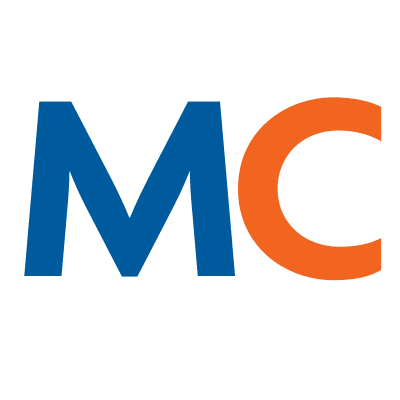- Solutions
- Solutions
- Home Health
- Hospice
- Life Plan Community
- Palliative Care
- Private Duty
- Senior Living
- Skilled Nursing
- Skilled Nursing
- Skilled Nursing Software
- Advanced Insights
- Customer relationship management
- Data and analytics
- Financial & operations management
- Marketing
- Nutrition management
- Referral management
- Regulatory compliance
- Retail management
- Resident engagement
- Revenue cycle management
- Skilled nursing interoperability
- Partners
- Blogs
- Resources
- About
- User Conference

Seeing interoperability as your next growth strategy
The next era of care will be won by the most connected providers.
By 2030, more than 20% of Americans will be 65 or older. This “silver tsunami” represents more than just a demographic shift. It’s a strategic inflection point. For home-based care, senior living, and long-term care providers, the winners won’t just be the ones delivering quality in-home care. They’ll be the ones building seamless healthcare ecosystems that connect hospitals, pharmacies, payors, community organizations, tech platforms, and caregivers.
The problem? Most providers still treat interoperability as an IT side project. It gets buried in backlogs. It’s tackled only when a referral source complains or a payor contract demands it. And it’s often approached as a custom, one-off integration.
That mindset is holding organizations back. Interoperability is no longer just a technical hurdle. It’s a strategic lever for growth, efficiency, and competitive advantage in the value-based care era.
In this blog, we explore how interoperability is becoming a strategic growth lever and how it can help your organization gain a more competitive edge.
The leadership gap in interoperability
Too often, interoperability is seen as a back-office task, an expense line item, or someone else’s problem in IT.
But in today’s care environment, slow, fragile integrations are costing providers more than they realize. Manual coordination isn’t sustainable. Referral leakage is rising. Delays frustrate both patients and partners. And without scalable frameworks, partnerships take months to activate, if they happen at all.
The data is clear:
- 99% of referral sources say strong interop capabilities are essential for success in value-based care and risk-sharing reimbursement models.
- 93% say they’re more likely to send referrals to providers who can receive orders electronically.
- 90% believe interoperability reduces administrative burden and improves patient outcomes.
Forward-looking leaders don’t wait for IT to catch up. They treat interoperability as a board-level business capability.
From project mindset to platform mindset
Every new partner shouldn’t require a brand-new, one-off integration. That approach is slow, expensive, and fragile.
The providers who thrive in the next decade will embrace a platform mindset. That means building reusable, API-driven integration frameworks that scale across multiple use cases.
With that foundation, organizations can:
- Expand into remote monitoring or home-based primary care without starting from scratch.
- Onboard new referral partners in weeks instead of months.
- Support payor and regulatory shifts without re-engineering dozens of one-off connections.
Other industries have already made this leap. Healthcare (especially home health, senior living, and long-term care) is finally catching up.
The rising stakes of doing nothing
Standing still isn’t neutral, it’s risky.
- Nearly 41% of U.S. healthcare payments were tied to value-based care in 2021, up from just 23% in 2015. That number continues to climb.
- Staffing shortages and rising patient complexity make manual coordination unsustainable.
- Patients and families increasingly expect seamless connected care experiences, regardless of setting.
Providers without scalable, reusable interop frameworks risk:
- Exclusion from payor networks and value-based contracts
- Higher operational costs from manual workarounds
- Referral leakage and delayed billing cycles
- Eroded patient trust when transitions break down
Interoperability is now a growth requirement, not a nice-to-have.
What leadership looks like in interoperability
Leading organizations treat interop as a core part of their healthcare strategy, not a technical afterthought. That requires:
- Strong governance: Shared ownership across clinical, operational, and IT leaders
- Dedicated budgets: Funding interoperability like any other growth initiative
- Bold KPIs: Measuring partner onboarding velocity, referral-to-service conversion rates, and cost per integration (not just system uptime)
- Scalable processes: Standard frameworks that reduce reliance on tribal knowledge and manual fixes
This isn’t about taking responsibility away from IT leaders. It’s about elevating interoperability to the level of strategic importance it deserves.

Imagine the future of interoperability
Let’s fast-forward to 2028.
Provider A still treats integrations as projects. Each new referral partner requires months of work. Manual coordination fills the gaps. Referral sources get frustrated. Patients fall through the cracks.
Provider B invested in a reusable, API-driven integration platform back in 2025. Now, new referral sources plug in within weeks. They’ve expanded into home-based primary care. Their partnerships grow faster. Their patients experience smoother transitions. Their board tracks interop metrics right alongside financial and clinical outcomes.
Both providers started in the same place. Only one treated interoperability as a strategic growth lever.
Measuring the interop payoff
Interoperability isn’t just about exchanging data. It’s about driving business outcomes. The organizations that invest in scalable frameworks see measurable benefits like:
- Faster partner onboarding: Cutting activation from months to weeks
- Lower costs: Reducing manual exception handling and IT resource strain
- Higher referral conversion: Ensuring referrals turn into admissions, not leaks
- Improved governance: Tracking meaningful KPIs like cost per integration or number of partners activated per IT resource
- New revenue streams: Expanding into remote monitoring, home-based primary care, and other high-growth service lines
When interoperability is approached as a growth engine, providers unlock operational efficiency and strategic differentiation.
Shifting the mindset
For many organizations, the biggest barrier isn’t technology. It’s mindset.
Providers often hesitate to tackle interoperability because they see it as:
- Expensive
- Overwhelming
- Someone else’s responsibility
The truth is you don’t have to start everywhere at once. Focus on the areas causing the most pain today (like referrals, wound care, or billing) and build frameworks that can scale across the business.
That shift, seeing interoperability as an asset instead of a burden, is what sets future-ready providers apart.
Why this matters for the patient and resident experience
All the business benefits aside, interoperability is also about people.
- A patient leaving a hospital for skilled nursing shouldn’t arrive without their diagnosis or medication list.
- A resident with dementia shouldn’t rely on memory, or a family member who might not exist, to share their care history.
- A caregiver shouldn’t need to juggle sticky notes, spreadsheets, or endless phone calls just to coordinate basic services.
Connected care ecosystems protect against these gaps. They ensure patient data follows the individual across settings. They reduce delays in treatment. They strengthen trust between providers, patients, families, and payors.
In an industry built on relationships, interoperability isn’t just a technical capability. It’s a promise of better care.
Elevating interop from back office to brand equity
Home-based care, senior living and long-term care leaders have a choice. They can keep treating interoperability as a back-office IT expense. Or they can recognize it for what it is: a strategic growth lever that shapes brand equity and competitive advantage.
The organizations that adopt a product mindset toward integration will:
- Move faster
- Scale smarter
- Reduce costs
- Unlock new revenue opportunities
- Deliver better patient and resident outcomes
The future of connected care will belong to those who think bigger than technical fixes. It will belong to the providers who treat interoperability as a platform for growth.
Ready to lead in connected care
The healthcare ecosystem is shifting fast. Value-based care is gaining ground. Partnerships are multiplying. Patients are demanding seamless, coordinated experiences.
Interoperability is no longer a hurdle to clear. It’s the foundation for differentiation. And the providers who invest today will be the ones defining tomorrow.
MatrixCare helps organizations connect their care through reusable, API-driven frameworks built for scalability. We help leaders gain more than just integrations. We help build future-ready ecosystems designed to grow with demographic shifts, staffing realities, and new care models.
Interoperability isn’t just a technical challenge. It’s your most powerful lever for growth.
Request a demo today for a closer look at MatrixCare.
Amber Raymundo
Amber Raymundo is a dedicated professional advocate for enhancing patient care through improved interoperability in post-acute care. She has over 10 years of experience working with post-acute providers and other care settings and is passionate about fostering an open health partner ecosystem driven by meaningful data exchange. Her deep understanding of these sectors, combined with her commitment to holistic patient care, helps her facilitate better communication and collaboration among partners.
Related Posts



See MatrixCare in action
Start by having a call with one of our experts to see our platform in action.
MatrixCare offers industry-leading software solutions. Thousands of facility-based and home-based care organizations trust us to help them improve efficiency and provide exceptional care.
© 2025 MatrixCare is a registered trademark of MatrixCare. All rights reserved.




